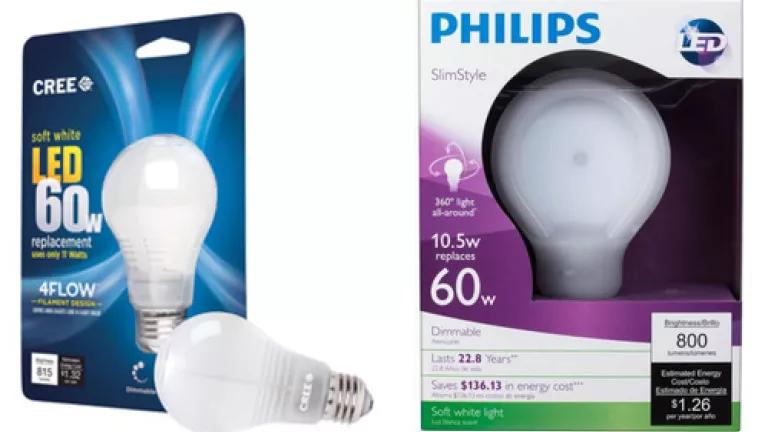
Now that we've completed the annual ritual of setting our clocks back an hour with the end of Daylight Savings Time, we're in "lighting season" where the days get shorter and our lights stay on more hours per day. But because roughly two out of every three bulbs in America's light sockets are still the inefficient ones, we're spending billions more than we need to light our homes.
Shifting to energy-saving bulbs like the new long-lasting LED (light-emitting diode) models can cut our nation's electric bill by a whopping $13 billion annually and prevent millions of tons of pollution because we'll be saving as much electricity as it takes 30 large coal-burning power plants to generate every year. So for the price of two venti latte drinks, consider using the time change as an opportunity to invest in a new energy-saving LED light bulb that will save more than $125 over its 20-years-plus lifetime.
LEDs are the way to go as they work great and use up to 85% less energy
Today's LED light bulbs come in virtually any shape, light level or flavor you can imagine. They reach full brightness instantly, dim, and direct the light exactly where you want it. And, like many electronics products, the price of new LED bulbs has dropped dramatically as the technology improves and the production levels increase. In fact, the LED bulb that replaces the old 60-watt incandescent that cost $25 just a few years ago can now be purchased for $8.97 today at stores like Home Depot (see new Cree and Philips bulbs below). And check to see whether your local utility offers a rebate, sometimes as high as $5 per bulb, to bring the cost of the bulb down to just a few bucks. After all, it's better and cheaper for the utility to motivate you to purchase the more efficient bulb, reducing the total amount of electricity needed to light our homes or businesses, then to have to build and run additional power plants.
LEDs are now available for every socket in the home
Just this past month, leading LED manufacturers introduced new 3-way bulbs, as well as bulbs that are as bright as the old 100-watt version. It's now possible to get an energy-saving, long-lasting screw-based LED bulb for your chandelier, bedroom fixture, table lamp, recessed can down light, or your porch light. Almost all of these are dimmable and they have about the same dimensions as your previous bulbs and should easily fit inside your fixture.
Look for lumens, not watts, when buying a new bulb
With the advent of new energy-saving bulbs like LEDs and CFLs (compact fluorescent lamps), we now need to shop for bulbs based on lumens—the amount of light the bulb provides—rather than how much power (watts) it consumes. Here's a nifty chart from NRDC's Light Bulb Buying Guide intended to help consumers select the replacement bulb that gives off the same amount of light as their old 40, 60, 75 and 100-watt incandescent bulbs.

Click image for full-size chart.
Not all LED bulbs are created equal
To help ensure you're getting a good quality LED bulb, buy one that has the ENERGY STAR™ label on the box. Also make sure you're buying the bulb that gives off the color of light you prefer. For example, if you want the light to have that yellowish incandescent bulb look, buy one that says "soft white" and has a color temperature of 2700K. If you prefer more of a cooler, bluish-white look, buy one marketed as "daylight," which will have color temperature of 5000K or so. Given that preferences vary by consumers, be sure to save your receipt and only buy a few initially so you can test and see which type you like before switching your whole home to LEDs.
And finally, let's not forget that your old 50-cent 100 watt incandescent bulb was no bargain as it sucked more than $10 worth of electricity over its brief life (1,000 hours) and had to be replaced about once a year – instead of once every 20-plus years for an LED.
